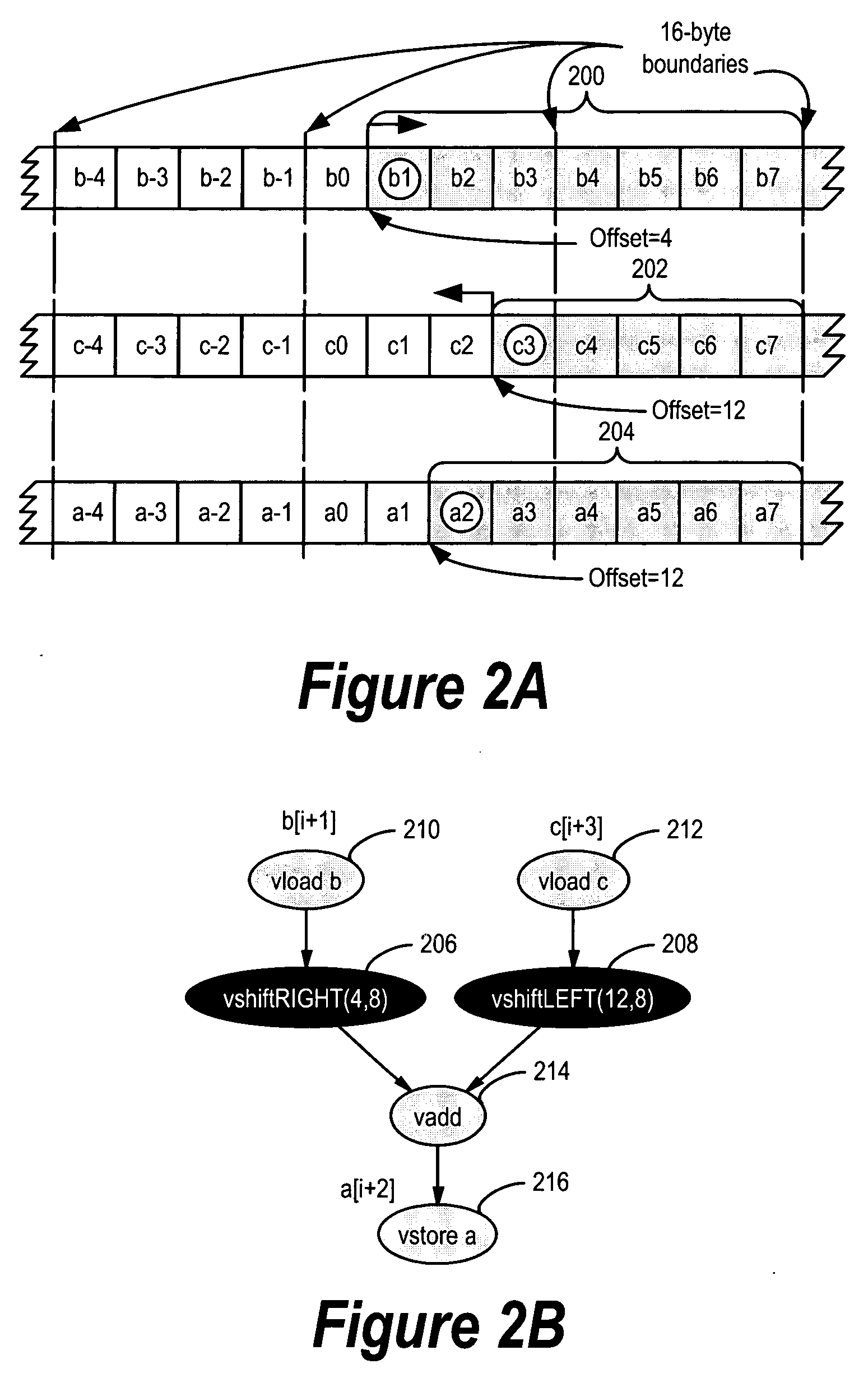System and method for SIMD code generation for loops with mixed data lengths
a loop and loop code technology, applied in the field of system and method for vectorizing loop code, can solve the problems of time-consuming and error-prone explicit vector programming, the alignment constraints of simd memory units present a great challenge to automatic simdization, and the alignment constraints of simd memory units are difficult to solve. achieve the effect of efficient realigning or shifting arbitrary streams
- Summary
- Abstract
- Description
- Claims
- Application Information
AI Technical Summary
Benefits of technology
Problems solved by technology
Method used
Image
Examples
Embodiment Construction
1. Preliminary Matters
[0033] In this section, an overview of the alignment handling framework of the incorporated EICHENBERGER application is provided, some of the key concepts that a preferred embodiment of the present invention is built upon are highlighted.
1.1. Alignment Constraints of a Valid Simdization
[0034] A valid vectorization for traditional vector units is only constrained by dependencies. This is no longer sufficient when simdizing for architectures with alignment constraints. Consider the loop a[i+2]=b[i+1]+c[i+3] in FIG. 1. Since there is no loop-carried dependence, a straightforward vectorization simply involves replacing scalar operations by corresponding vector operations. The generated code, however, will execute incorrectly if the hardware has alignment constraints. For example, in the VMX instruction set, due to the address truncation effect, a vector; load from address of b[1] (i.e., vload b[1]) actually loads b[0] . . . b[3],instead of the desired b[1] . ....
PUM
 Login to View More
Login to View More Abstract
Description
Claims
Application Information
 Login to View More
Login to View More - R&D
- Intellectual Property
- Life Sciences
- Materials
- Tech Scout
- Unparalleled Data Quality
- Higher Quality Content
- 60% Fewer Hallucinations
Browse by: Latest US Patents, China's latest patents, Technical Efficacy Thesaurus, Application Domain, Technology Topic, Popular Technical Reports.
© 2025 PatSnap. All rights reserved.Legal|Privacy policy|Modern Slavery Act Transparency Statement|Sitemap|About US| Contact US: help@patsnap.com



